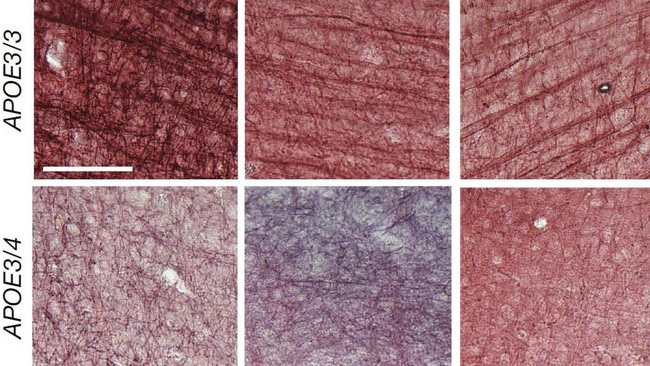Gene breakthrough may lead to treatment for Alzheimer’s
Scientists believe discovery of rare genetic variant that increases risk of developing the disease may lead to drug treatments.

Scientists believe they have solved the mystery of how a gene increases the risk of Alzheimer’s disease, a breakthrough that could lead to new treatments.
All of us carry in our DNA a gene known as APOE, but it comes in different versions. The most common, APOE3, has no effect on the likelihood of developing Alzheimer’s.
However, a rarer variant – APOE4 – is the strongest genetic risk factor for the disease. The research, published in Nature, offers the best explanation yet for why this should be and also suggests that drugs might be found that help.
Inheriting APOE4 from a parent does not mean a person will definitely develop Alzheimer’s, but for the 25 per cent of the population who carry one copy it more than doubles the risk. For the 2-3 per cent who have two copies, the risk increases about tenfold.
The study shows for the first time how APOE4 prevents an important part of the brain’s “wiring” from developing properly.
Professor Rob Howard of University College London, who was not involved in the research, said it offered an alternative to the dominant theory that Alzheimer’s was caused by the build-up of toxic proteins, known as amyloids. “We’ve known for 20 years that APOE4 is a risk factor for Alzheimer’s but we haven’t known why. The most exciting thing about [the new research] is that it opens up an entirely new therapeutic avenue. Treatments [based on the amyloid hypothesis] haven’t worked.”

The study suggests that in people who carry APOE4, cells called oligodendrocytes do not function properly. This is important because oligodendrocytes produce myelin – a fatty, multilayered membrane that wraps around the cable-like extension that projects out from each nerve cell. These cables, known as axons, allow the nerve cells to form brain circuit connections.
Without proper myelin, communications among nerve cells, which are also known as neurons, are degraded. The researchers believe this may explain some of the symptoms of Alzheimer’s.
Part of the research involved creating human oligodendrocytes in petri dishes. Those with APOE4 were unable to process fat molecules – the building blocks of myelin – correctly.
Later, when they were grown alongside neurons, the APOE4 oligodendrocytes failed to provide myelin to the neurons as well as APOE3 cells did.
The researchers also analysed the brains of 32 people after death, 20 of whom had been diagnosed with Alzheimer’s. There was less myelin in those who carried APOE4. The fatty sheaths around axons in the corpus callosum – the structure that connects the brain hemispheres – were thinner in APOE4 brains. The same was true in mice engineered to carry human APOE4.
The researchers also found that a drug known as cyclodextrin, which aids in transporting cholesterol inside a cell, showed promising early signs. When it was applied to APOE4 oligodendrocyte cells cultured in a dish, they provided better myelin to neurons. It had the same effect in mice that carried APOE4, and these rodents displayed small but statistically significant improvements in learning and memory.
Experts said the findings should be treated with caution. Alzheimer’s is a complex disease and the changes seen in oligodendrocytes could be a result rather than a cause of the condition. Studies in mice often do not translate to humans and billions of dollars have been spent on unsuccessful drugs.
However, scientists said the findings were intriguing and offered a new way to look at the disease. “Although the improvements in learning and memory [in the rodents] induced by cyclodextrin are mild, this study paves the way to possible treatments that target oligodendrocytes in Alzheimer’s disease,” Karl Carlstrom and Goncalo Castelo-Branco of the Karolinska Institute in Sweden said in a commentary on the research, also published in Nature. “Such treatments – together with drugs that target other mechanisms, such as the accumulation of insoluble Tau and amyloid-protein plaques, which are considered hallmarks of Alzheimer’s disease – might enable us to better tackle this devastating condition.”
– The Times





To join the conversation, please log in. Don't have an account? Register
Join the conversation, you are commenting as Logout